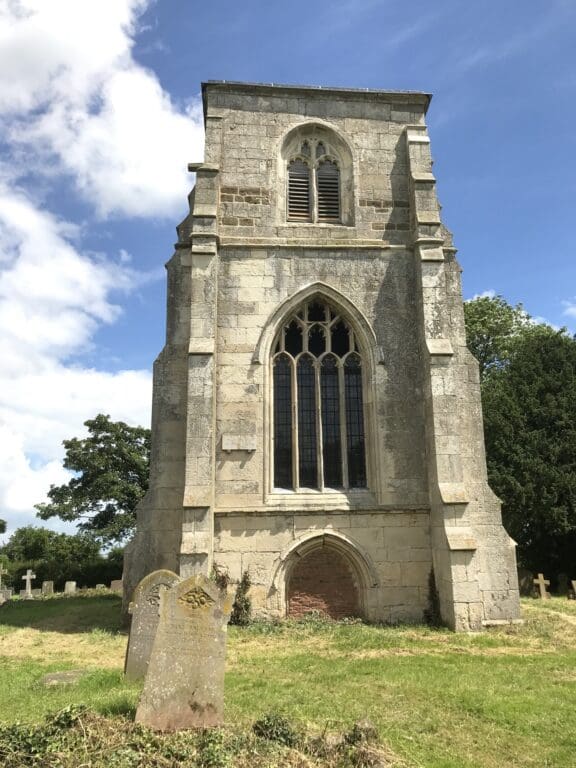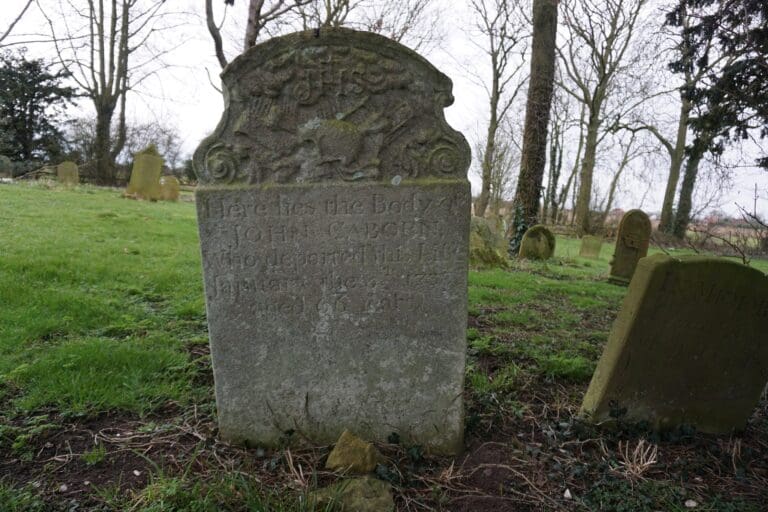
It was moved partly because it was felt to be in the wrong position, but also because it had started to move (the tower is still on a definite lean). The architect, James Fowler re-sited the body of the medieval church from its original position in Charlesgate Road to North End Lane.
Old St Peter’s tower dates from the 15th century and is listed Grade I. It’s rather grand, with textured surface of weathered green sandstone and limestone ashlar, and some localised red-brick repair.
On the west front a blocked-up doorway with richly moulded head shows how much the tower has sunk. Above this, a is large pointed window with four pointed cusped lights, rich vertical tracery, and a hood moulding. Rectangular leaded lights have recently been re-introduced to this window, as the wind whipping down the lane was severely scouring the soft green sandstone.
We took ownership of the tower in 1976 after being called in by the local farmer, Mark Stubbs, who fought hard to prevent its demolition and left a sum of money for its maintenance.
Mr Stubbs died in 1977 and a plaque commemorates his connection with the church on the north wall.
The surrounding countryside is relentlessly flat, set in the ‘Marsh of Lincolnshire’ and prone to subsidence. Linear settlements and isolated farmsteads co-exist with medieval churches; reflecting the long-lost prosperity of the area. Today, however, the area is rich in wildlife, and visible from the church is ‘Theddlethorpe Dunes’ a designated National Nature Reserve (NNR) managed by Lincolnshire Wildlife Trust. The reserve is characterised by tidal sand and mudflats, salt and freshwater marshes and sand dunes.




The buttons below link to more information about this church on other websites.